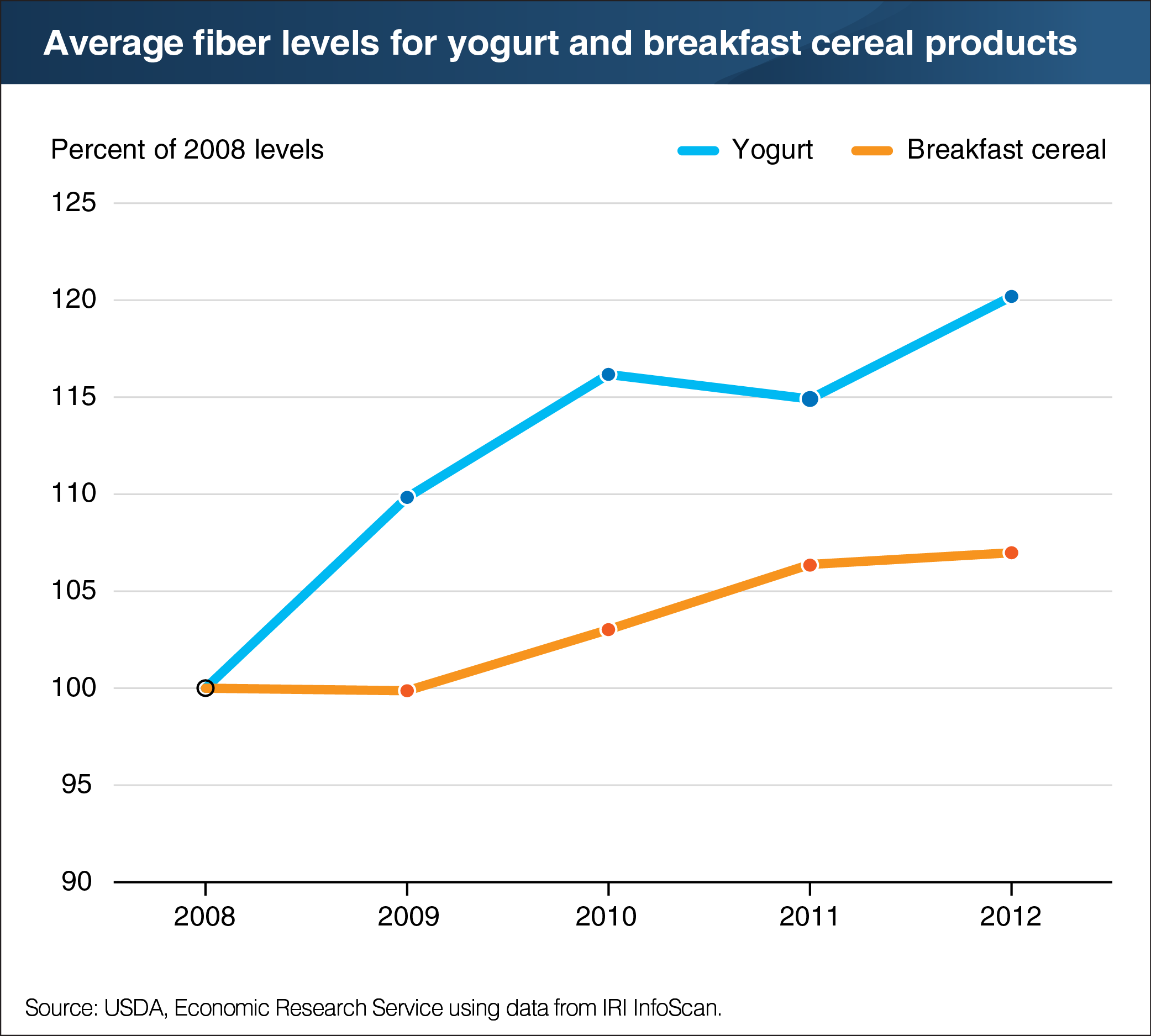Fiber content of yogurt and breakfast cereal products increasing
- by David Levin and Stephen Martinez
- 3/21/2018

The 2015-2020 Dietary Guidelines for Americans identifies fiber as a key nutrient that is under-consumed by many people. However, increasing fiber consumption requires that consumers be able to identify high-fiber foods, highlighting the importance of labeling and marketing. Recent ERS analysis found that the average fiber content in yogurt products increased by 20.2 percent between 2008 and 2012. New yogurt products with added fiber to promote the growth of probiotics and with toppings, such as granola, crushed cookies, and nuts, contributed to the increase. New yogurt products with either a probiotic health claim on the package or yogurt toppings contained twice as much fiber on average than new products without the health claim or toppings. Average fiber content among breakfast cereal products rose by 6.9 percent between 2008 and 2012. Consumers’ preferences for breakfast cereals made with fiber-rich whole grains have driven the increase in fiber levels. New cereal products carrying a whole grain claim contained almost 47 percent more fiber compared to new products without the claim. This chart appears in "Yogurt Products and Breakfast Cereals Increasing Their Fiber Contents" in the February 2018 issue of ERS’s Amber Waves magazine.

